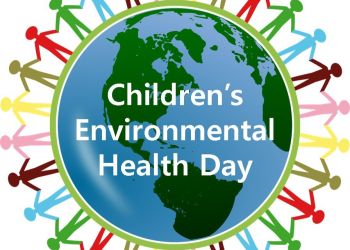By Erin Vinoski Thomas, MPH, CHES, Health and Disability Fellow, NACCHO
Many women with disabilities want to experience pregnancy. Pregnancy rates among women with disabilities have grown in recent years and are similar to pregnancy rates of women without disabilities in the same age and income groups.[1,2] Despite these statistics, women with disabilities remain at heightened risk for pregnancy-related health complications.[3,4] They face challenges accessing healthcare and support before, during, and following their pregnancies, which adds to these health disparities.
Barriers to Care for Pregnant Women and New Mothers with Disabilities
Poor Environmental Accessibility
Doctors’ offices that are accessible for those with mobility disabilities can be hard to find. Even when the offices are accessible, providers may not have accessible equipment needed (e.g., adjustable examination tables and accessible scales) to provide adequate reproductive care.[5,6]
Exclusion from Informational Resources
Specific needs of women with disabilities are unlikely to be addressed in mainstream pregnancy and parenting information sources, like books, magazines, and popular mobile applications.[7] Recognizing credible web-based information and advice among the abundance of information available on the Internet can present another challenge.
Inadequate Provider Training
Healthcare providers are not often trained to provide reproductive care to women with disabilities.[8]Further, providers that do have specialized training may not be located near all women who need their services.
Social Stigma
Women with disabilities encounter negative attitudes about pregnancy and parenting from many sources, including their family members, healthcare providers, and the general public.[9,10] This negativity may be stressful and increase pregnancy health risks.
What Can Local Health Departments Do?
Local health departments (LHDs) are situated to provide holistic, accessible care to women with disabilities before, during, and after their pregnancies. Many LHDs already offer family planning, maternal clinics, mental health care, home visiting, and Special Supplemental Nutrition for Women, Infants, and Children (WIC) services that are critical to those transitioning through pregnancy and early motherhood. LHDs that include women with disabilities in such services may decrease maternal health disparities experienced by this population.
Below are three recommendations with accompanying resources for LHDs to include women with disabilities in existing pregnancy and maternal health services or develop new programs for pregnant women and new moms with disabilities.
Recommendation 1: Improve accessibility and inclusivity of existing facilities, informational resources, and health promotion programming.
Ensuring physical accessibility of LHDs by people with a range of disabilities is important for all services offered. The links below include tools to assess accessibility in LHDs:
- Checklist for Existing Facilities, New England ADA Center
- Community Health Inclusion Index On-site Assessment, National Center on Health, Physical Activity, and Disability (NCHPAD)
Representing people with disabilities in informational resources such as brochures and fact sheets is also important. Using photos that accurately represent people with disabilities on resources displayed in maternal clinics, for example, can create positive change. It may also be helpful to offer a handout with web resources for pregnant women and new mothers with disabilities. Examples include the following:
- Center for Research on Women with Disabilities (CROWD)
- National Research Center for Parents with Disabilities
Inclusion within health education programs that promote physical activity, mental wellness, and balanced nutrition before, during, and after pregnancy can minimize the health risks of women with disabilities. Below are some resources for adapting existing health promotion programs:
- Guidelines for Disability Inclusion in Physical Activity & Nutrition Programs and Policies, NCHPAD
- Strategies for Including People with Disabilities in Health Department Programs Plans and Services, NACCHO
Recommendation 2: Provide staff training on the population of people with disabilities.
Training LHD staff can help reduce stigma toward pregnant women with disabilities. NACCHO offers a helpful “Disability 101” training to reach this goal:
The American College of Obstetricians and Gynecologists (ACOG) also offers a web-based training series specifically for clinicians serving women with disabilities. Pregnancy and parenting are among the topics addressed:
Recommendation 3: Collect data about pregnancy among women with disabilities in your city or county.
Collecting demographic data from people with disabilities on all LHD surveys is one of the best ways to understand local issues and priorities for this population. Surveys addressing pregnancy- and parenting-related services (e.g., family planning, maternal health, WIC, etc.) are no exception. The Centers for Disease Control and Prevention (CDC) recommends including six basic disability demographic questions:
Visit the NACCHO Toolbox for more information and resources on disability and women’s health.
References
- National Council on Disability (NCD). (2012). Rocking the cradle: Ensuring the rights of parents with disabilities and their children. Washington, DC: NCD.
- Horner-Johnson, W., Darney, B. G., Kulkarni-Rajasekhara, S., Quigley, B., & Caughey, A. B. (2016). Pregnancy among US women: Differences by presence, type, and complexity of disability. American Journal of Obstetrics and Gynecology, 214(4), 529e1-529e9.
- Signore, C., Spong, C. Y., Krotoski, D., Shinowara, N. L., & Blackwell, S. C. (2011). Pregnancy in women with physical disabilities.Obstetrics & Gynecology, 117, 935-947.
- Mitra, M., Parish, S. L., Clements, K. M., Zhang, J., & Moore Simas, T. A.(2018). Antenatal hospitalization among U.S. women with intellectual and developmental disabilities: A retrospective cohort study. American Journal on Intellectual and Developmental Disabilities, 123(5), 399-411.
- Nosek, M. A., Howland, C., Rintala, H., Young, M. E., & Chanpong, G. F. (2001). National study of women with physical disabilities: Final report. Sexuality and Disability, 19, 5-40.
- Mitra, M., Long-Bellil, L. M., Iezzoni, L. I., Smeltzer, S. C., & Smith, L. C. (2016). Pregnancy among women with physical disabilities: Unmet needs and recommendations on navigating pregnancy. Disability and Health Journal, 9(3), 457-63. doi: 10.1016/j.dhjo.2015.12.007.
- Lawler, D., Laler, J., & Begley, C. (2013). Access to maternity services for women with a physical disability: A systematic review of the literature. International Journal of Childbirth, 4(3), 203-217.
- Taouk, L. H., Fialkow, M. F., & Schulkin, J. A. (2018). Provision of reproductive healthcare to women with disabilities: A survey of obstetrician-gynecologists’ training, practices, and perceived barriers. Health Equity, 2. doi: 10.1089/heq.2018.0014
- Powell, R. M., Mitra, M., Smeltzer, S. C., Long-Bellil, L. M., Smith, L. D., & Iezzoni, L. I. (2017). Family attitudes and reactions toward pregnancy among women with physical disabilities. Women’s Health Issues, 27(3), 345-350.
- Potvin, L. A., Barnett, B. M., Brown, H. K., & Cobigo, V. (2019). “I didn’t need people’s negative thoughts”: Women with intellectual and developmental disabilities reporting attitudes toward their pregnancy. Canadian Journal of Nursing Research, 1-14. doi: 1177/0844562118819924










